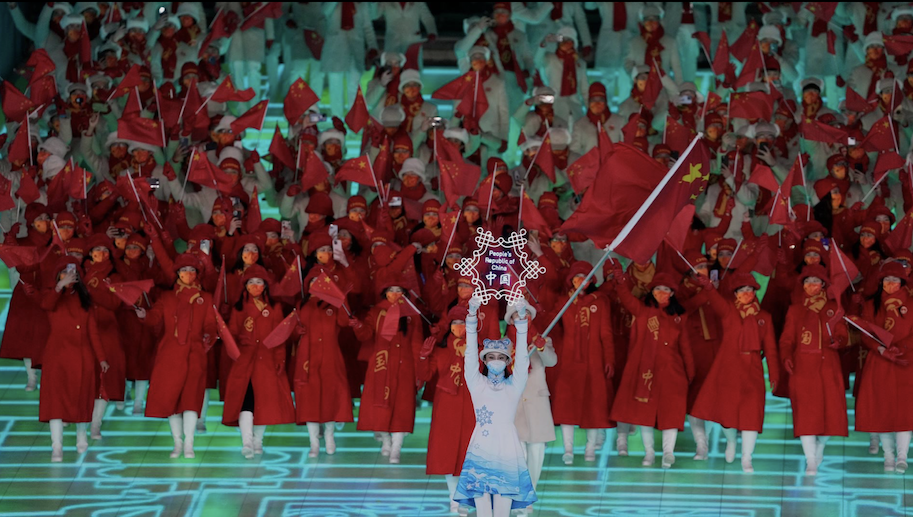Lillehammer legacies help Chinese Olympians make history at Beijing 2022

19 Feb 2022 – A special collaboration between China and Norway helped the Beijing 2022 host nation field its strongest-ever team for the Olympic Winter Games.
China’s past success in winter sports has largely been focused on figure skating, freestyle skiing, and short-track and speed skating, but when Beijing won the right to host the Olympic Winter Games 2022, the country was determined to field competitive teams in every discipline on the Olympic programme.
As part of its goal to engage 300 million people across China in winter sports, the host nation wanted to seize the unique opportunity presented by staging the Games to promote disciplines that were relatively unknown in the country, such as cross-country skiing, biathlon, ski jumping, Nordic combined and sliding sports.
Looking at the success enjoyed by Norway in these events, China’s General Administration of Sport therefore signed a Memorandum of Understanding with the Norwegian Ministry of Culture in 2017. The agreement would enable promising Chinese athletes to train with Norwegian coaches and hone their skills using the same iconic hills and venues in Lillehammer that hosted the Olympic Winter Games in 1994, and the Winter Youth Olympic Games (YOG) in 2016.
“Once Beijing became hosts, the Chinese government promised to have excellent Olympic Games, but at the time we had very few athletes that could participate in some of the competitions,” explains Zhang Bei, the team leader of the Chinese cross-country skiing team. “We aimed to get participants in these new events like cross-country, and we also wanted our young athletes to be able to put in a good performance at the Games, and learn from them for future events.
“Norway is one of the strongest countries, so our Olympic Committee proposed the cooperation. We wanted to teach them how to train in the sports, then how to train better. Our Norwegian partners gave us great guidance.”
That guidance started with an assessment of thousands of potential athletes, before 120 were chosen to travel to Norway for training. The majority of them had little or no experience of winter sports, while many of them had never even seen snow before.
“We looked at 4,000 boys and girls who were promising athletes, and our Norwegian partners also came to China to look at the athletes and select the ones they thought might be good,” explains Zhang. “In total, we identified around 120 athletes, who travelled to Norway for training. For cross-country, we looked at athletes that have a very good endurance capacity. But we also looked for those who are very self-motivated, and who have a strong will to participate in the Olympics.”
The first group of Chinese athletes arrived in Norway in 2018, spending six months training with the country’s best winter sports coaches.
“The athletes were well trained, but they had no skills in skiing, so it was very challenging,” explains Trond Harberg, CEO of the Norwegian Top Sports College, who oversaw the delivery of the cross-country skiing training programme in Lillehammer. “We had to build them up from the bottom, but their work ethic is very, very high. The progress was pretty good.”
So good, in fact, that China has fielded its largest-ever team of cross-country skiers at Beijing 2022, with all 12 of its athletes having trained in Norway ahead of the Games. In comparison, the country was represented by just four athletes in cross-country skiing at both the Olympic Winter Games PyeongChang 2018 and Sochi 2014.
“In cross-country we had started from zero, but the progress was really excellent,” confirms Zhang. “There are still gaps between them and the established, experienced athletes. But they have got good enough to form a team for the Olympic Games. This is an incredible opportunity for them, and for all of us.”
The results in Beijing highlight the impact of the training programme, with China achieving some of its best-ever cross-country skiing results, including a 10th-place finish in the women’s 4x5km relay.
But their efforts would not have been possible without the world-class venues and training facilities available in Lillehammer, which are a legacy of hosting the Olympic Winter Games in 1994 and the Winter YOG in 2016.
In particular, the establishment of the Lillehammer Olympic Legacy Sports Centre (LOLSC), which opened in December 2017, has enabled young athletes such as those from China to travel to Norway to train at this international centre of excellence. Funded by the Norwegian Ministry of Culture, and a one-million Norwegian krone donation from the IOC, the LOLSC trained a total of 500 athletes from 39 nations during 2020, covering a range of events from curling, sliding sports and ski jumping through to Paralympic biathlon and cross-country skiing. The Youth Olympic Village, built as student accommodation ahead of the 2016 YOG through a EUR 13.5 million contribution from the IOC, is now also used for LOLSC summer camps.
“It goes back to us having the Winter Olympics in Lillehammer in 1994,” explains Erik Ulateig, CEO of the LOLSC. “We have the college here for athletes, we’ve had the Youth Olympics here too, and we have the legacy organisation. So we have a system where we can welcome people from other nations.”
Now, those Chinese athletes who honed their skills in Lillehammer are inspiring a new generation of young athletes in the host nation thanks to their historic achievements at Beijing 2022, providing yet another legacy from these Olympic Winter Games





